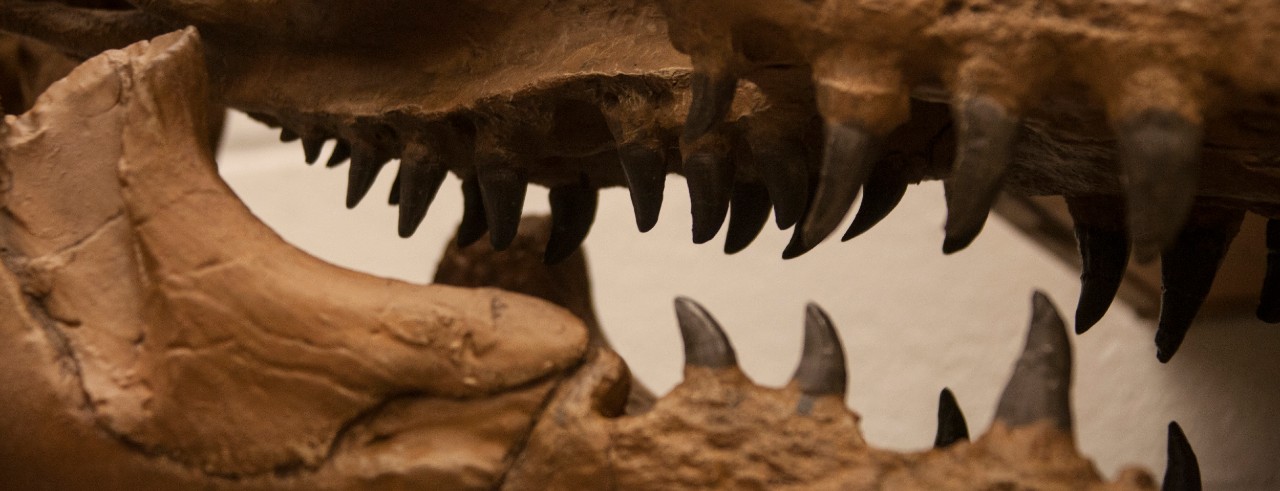
Discover: Did giant sea lizard rule oceans 66M years ago?
UC paleontologist Takuya Konishi explains significance of new mosasaur discovery
Discover turned to University of Cincinnati paleontologist Takuya Konishi to explain the significance of a new species of mosasaur described by the University of Bath.
Konishi, who was not part of the discovery, is an expert in mosasaurs and other marine reptiles that terrorized oceans during the Cretaceous Period more than 65 million years ago.

UC College of Arts and Sciences assistant professor Takuya Konishi studies mosasaurs and other ancient marine reptiles. Photo/Joseph Fuqua II/UC
Nicholas Longrich of the University of Bath led a study about a newly identified species of mosasaur they called Thalassotitan atrox (which means merciless sea giant) found in Morocco that had conical teeth like a killer whale. It was as big as an orca, too, at 30 feet.
Konishi told Discover that the specimen resembles another mosasaur called Prognathodon overtoni.
“The bulk of the features are basically found in this other species of mosasaur,” Konishi told Discover. “It’s just 10 million years older. The morphological consistency between the two mosasaurs likely implies just a continuation of that same kind of niche for Prognathodon.”
When it comes to the world's largest marine reptiles, location might not be as important a factor to identification, he said.
“They are large predators, and 10 million years would've given ample time for any large marine reptiles to achieve global distribution, keeping their original niche wherever they ended up,” he told Discover.
Konishi and UC graduate Alexander Willman and University of Alberta professor Michael Caldwell in 2021 identified an 18-foot-long mosasaur they called Ectenosaurus everhartorum after paleontologists Mike and Pamela Everhart. The mosasaur inhabited the Western Interior Seaway 80 million years ago in what is now western Kansas.
Featured image at top: The teeth of a mosasaur. Photo/Joseph Fuqua II/UC

UC College of Arts and Sciences assistant professor Takuya Konishi studies ancient marine reptiles such as mosasaurs. Photo/Joseph Fuqua II/UC
Related Stories
UC's art collection on display at the Contemporary Arts Center
January 5, 2026
University of Cincinnati leaders joined WVXU's Cincinnati Edition to talk about the university’s 200-year-old art collection, a new exhibition at the Contemporary Arts Center and the release of a companion book exploring the collection’s role in education and public engagement.
UC faculty and staff among Rising Star leadership honorees
January 5, 2026
Two UC faculty and staff members are among this year's Rising Star leadership program sponsored by YWCA Greater Cincinnati. Kelli Beecher, assistant professor in the UC College of Nursing, and Brittany Bibb, assistant director of programs and operations in the UC Division of Student Affairs, are among the emerging leaders of 2026. They were featured in the publication Movers & Makers.
What's behind the mysterious rise of migraines?
January 5, 2026
Weather patterns such as extreme heat and storm conditions have been linked to migraine attacks, and research shows those environmental conditions are becoming more common. As National Geographic recently reported, one of the leading theories behind this mysterious rise is that climate change may be playing a role.
